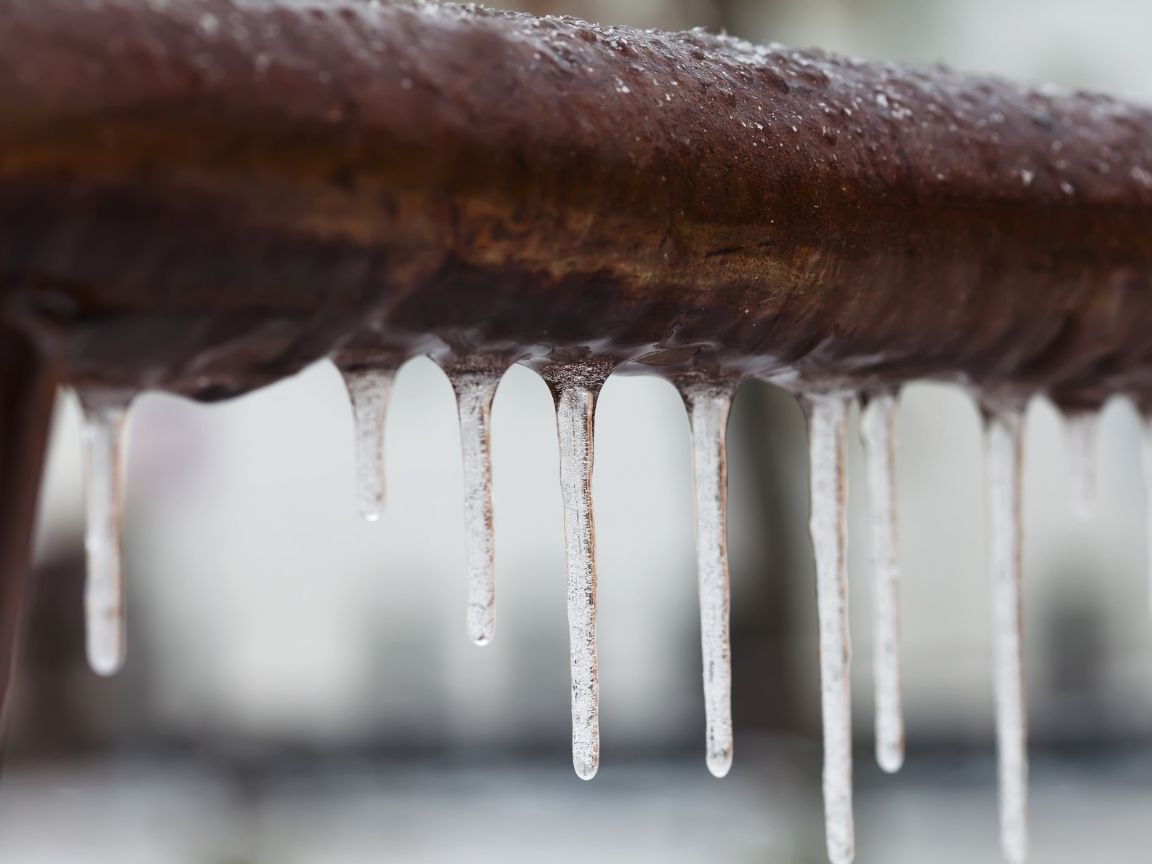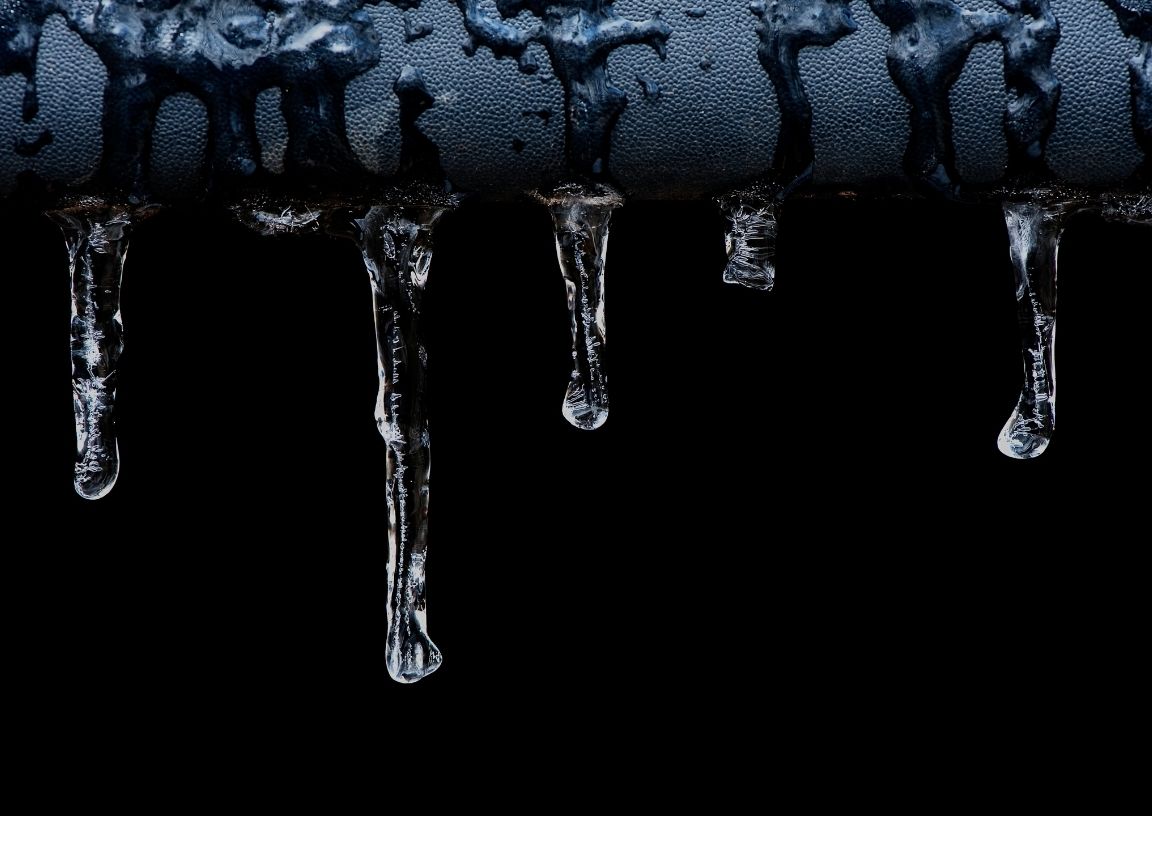
How To Prevent Frozen Pipes And What To Do If They Freeze Anyway
By 911 Water Damage Experts
When water freezes in your pipes, whether due to quick drops in outside temperatures, poor insulation, or the thermostat is set too low, its volume expands and puts pressure on the pipe from inside.
This can cause a burst pipe, but even a small crack or two can be the start of something devastating and expensive.
A good rule of thumb: Be aware ahead of time how your homeowner insurance can kick in to help repair damage from a frozen and burst water pipe. If you’re not sure about coverage, talk to a professional who can guide you through the process.
Below we will cover the following:
– How to spot the early signs of frozen pipes
– How to fix frozen pipes
– Tip tops on how to prevent pipes from freezing
– What to do if your pipes freeze anyway
Early Signs Of Frozen Pipes
One of the earliest signs of a frozen pipe is when no water comes out of your faucet when you turn it on.
If you notice that, head first to the basement and check to see that the water is still turned on and that you don’t have a leak.
Once you’ve confirmed these two things, continue your inspection to make sure one of your pipes has not burst. If your search reveals that your pipes are frozen but none have ruptured, you have two choices:
Call a plumber to help thaw your frozen pipes. Most of the time, this is a better idea if you don’t think you can safely thaw the pipes yourself, you don’t know where the frozen pipes are or you can’t access the frozen area.
Attempt to thaw the frozen pipes yourself. Be aware this option can be dangerous if not done correctly.
How To Fix Frozen Pipes
 If you’re not an experienced DIY-er, it’s always safer to get assistance from a professional.
If you’re not an experienced DIY-er, it’s always safer to get assistance from a professional.
However, there are fast fixes you can try if you’re experienced with home maintenance work. If you attempt to thaw the frozen pipes yourself, keep the following tips in mind:
Keep your faucet open. Water and steam will be created during the thawing process, and your pipes need an opening to discharge this. Keeping the faucet open also allows for moving water to run through the pipe, which will expedite the thawing process.
Apply heat to the section of the pipe that is frozen. This can be done by wrapping an electronic heating pad around the pipe, heating the area with a hairdryer or both.
If you lack either of these items, using towels soaked in hot water will help as well. Remember, this is a temporary fix and the heating pad should not be left unattended to prevent a fire.
Know what not to do. Never use a blowtorch, propane or kerosene heaters, a charcoal stove or any other open flame device to thaw your frozen pipes. That presents a severe fire hazard. You should also avoid using a space heater unless you are sure the area is clear of any flammable material. Again, never leave the space heater unattended.
Continue applying heat until water flow returns to normal. Once you have successfully thawed the pipe, turn on other faucets in your home to check for any more frozen water pipes.
Take immediate action if the frozen pipes are located inside an exterior wall. It’s a serious situation when you should call a professional water damage expert, as repairs may involve cutting a hole in the wall toward the inside of the house to expose those pipes to warmer air.
How To Prevent Frozen Pipes
Although we can’t control the weather, there are things we can do to prevent pipes from freezing. To prevent pipes from freezing and causing major damage, follow these steps:
1. Drain water from pipes that are likely to freeze. This includes your swimming pool and sprinkler water supply lines.
2. Disconnect any hoses from the outside of your home, drain the hoses and store them in the garage. Make sure to close the indoor valves supplying these outdoor access points.
3. Insulate the area around vents and light fixtures. This helps prevent heat from escaping into the attic.
4. Seal any wall cracks. Be sure to pay careful attention to the areas around utility service lines.
5. Open kitchen cabinets. This allows the warm air to circulate around the pipes.
6. Keep the garage doors closed to protect water lines.
7. Allow your faucets to drip cold water on the coldest days. The movement will make it harder for the water to freeze.
8. Keep your thermostat at the same temperature day and night. Never let it fall below 55 degrees Fahrenheit when you leave your home.
9. Ensure you have proper seals on all doors and windows.
10. Place a 60-watt bulb in areas where you’re concerned about pipes freezing. Make sure there are no combustible materials near the bulb.
11. Be sure to alert a trusted neighbor if you’ll be away more than a few days, and ask them to check periodically to make sure that the measures you have taken in preventing frozen pipes worked and that nothing has ruptured.
12. For any outdoor faucets with cut-off valves, be sure they are closed and the faucets are drained. You can also protect them by using faucet covers throughout the winter months.
13. If cold weather settles in and you notice temperatures beginning to drop, start a small drip of both hot water and cold water in the kitchen, bath, laundry areas, and any other faucets in the home. A small water drip is all that is needed to keep water moving through the system and prevent frozen pipes.
Protection From Frozen Water Pipes
Water utilities are responsible for water mains and pipelines that connect to your home, but not pipes located on your property. Help protect your pipes from potential damage and avoid costly repairs by following these steps.
Frozen water pipes and the damage they can cause are a reality for thousands of people each year. That’s especially the case when you are at below-freezing temperatures for an extended period of time.
For example, The Insurance Institute for Business & Home Safety says a burst pipe can cause more than $5,000 in water damage. It is clear that the damage can be extensive so it’s crucial to pay attention and stay on top of potential issues.
If you have any questions or need help with water damage or frozen pipes, feel free to call 1-833-WE-DRY-IT any time 24/7/365 all the time, we’re there when you need us!
Related Posts
How to prevent weather damage during a storm
The dangers of a leaky roof and what to do when you find a leaky ceiling
10 helpful smoke damage cleaning tips
Restaurant flooded? Here’s how to deal with a restaurant flooding
What’s causing mould in your home? Here are the top reasons why
How to prevent mould growth after a flood
A pipe burst in my business building – what do I do?
What to do when a water pipe bursts in your apartment
Hire the right mould removal company by asking these vital questions
15 interesting facts about mould
What causes mould damage and what you can do about it
Top common signs of water damage: here’s what to look for

